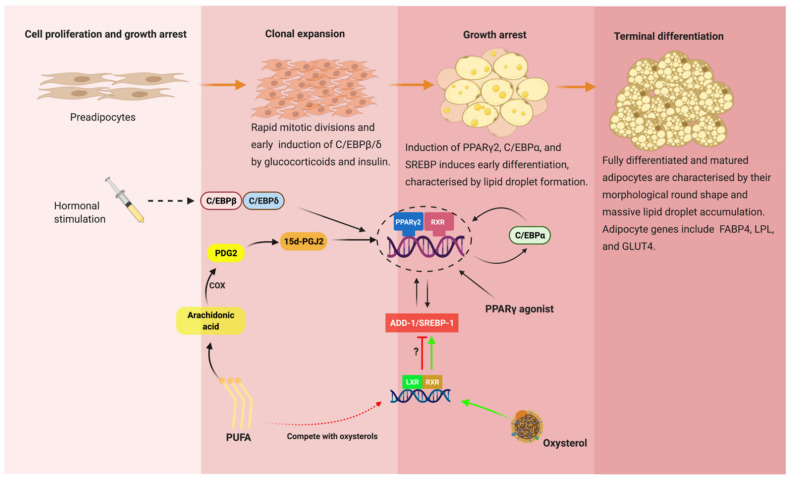Figure 2.
Transcriptional regulation of adipogenesis: Effective adipogenesis depends on the interdependency of several transcription factors. The treatment of preadipocytes with hormonal stimulants, such as glucocorticoids, cAMP, and insulin, transiently induces C/EBPβ and δ early in adipogenesis. Together, C/EBPβ and δ induce PPARγ2. C/EBPα, another member of the C/EBP family of transcription factors, is induced later on during adipogenesis by PPARγ2, and in turn, C/EBPα sustains the high levels of PPARγ2. The expression of ADD-1/SREBP-1, which PPARγ2 enhances, is necessary to induce target genes involved in the fatty acid synthesis, leading to the accumulation of lipid droplets, a characteristic of fully matured adipocytes. PUFA control adipogenesis via its endogenous derivative 15d-PGJ2. PUFA may also impair the induction of SREBP1 by competing with oxysterols, a potent LXR ligand. Abbreviations: ADD-1: adipocyte differentiation and determinant factor, C/EBP: CCAAT enhancer-binding protein, cAMP: cyclic AMP, PUFA: polyunsaturated fatty acid, PPAR: peroxisome proliferator-activated receptor, PDG2: prostaglandin G2, SREBP-1: sterol regulatory element-binding protein 1, 15d-PGJ2:15-deoxy-Δ12,14-prostaglandin J2. Created with BioRender.com, accessed on 16 March 2021.

